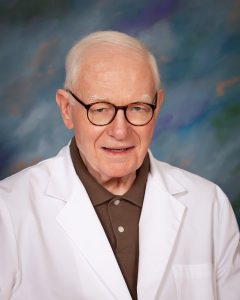
Did you know that the hepatitis B virus doesn’t just infect humans? It also infects chimpanzees1, tree shrews1, Peking ducks1, horses2, and woodchucks2. The hepatitis B virus that infects woodchucks is closely related to the human hepatitis B virus.2 Because of this, woodchucks have been a prominent animal model in studying the hepatitis B virus and testing drugs for the disease.2,3
Behind every legacy, there is a man who started it all. In the case of the woodchucks and hepatitis B, there was Bud Tennant, DVM. Dr. Tennant was a California native, born in the San Joaquin Valley.2 He studied veterinary medicine, earning his Doctor of Veterinary Medicine from the University of California at Davis in 1959. 2 As a veterinarian, Dr. Tennant conducted research in comparative medicine focusing on hepatocarcinogenesis (development of liver cancer), hepatic injury mechanisms, viral hepatitis, and gastrointestinal and liver diseases of domestic animals.2
His work in hepatitis started during his tenure as the James Law Professor of Comparative Medicine at Cornell University, where he studied the pathogenesis of serum hepatitis in horses.2 He would not work with woodchucks until Dr. Norman Javitt, Chief of Gastroenterology at Weill-Cornell Medical College at the time, approached him, urging the need for an animal model for studying hepatitis B virus to understand pathogenesis, treatment, and prevention of hepatitis B. Dr. Javitt introduced him to Drs. Jesse Summer and William Mason’s research on a new virus infecting woodchucks, its close relation to human hepatitis B virus, and its association with chronic hepatitis B and liver cancer.
Dr. Tennant spent over thirty years on the study of Woodchuck Hepatitis Virus infection, working with a colony of woodchucks in Ithaca, New York. 2 He developed the woodchuck as a successful animal model to learn how hepatitis B effects the liver, including the development of liver cancer. His work with the woodchuck model ultimately enabled scientists to run clinical therapeutic trials for treating hepatitis B in humans. 2 In fact, preclinical studies for almost every hepatitis B therapeutic drug licensed by the FDA have been conducted using the woodchuck model! Today, the Woodchuck Hepatitis Virus infection study continues at the Roswell Park Cancer Institute in Buffalo, New York. 2
Dr. Baruch S. Blumberg would also contact him to work together on fighting the hepatitis B virus in humans.
Dr. Bud Tennant is famous in the scientific world for his game-changing work in hepatitis B, and won many awards. At the 2016 Hepatitis B Foundation Crystal Ball, Dr. Tennant was presented with the 2016 Baruch S. Blumberg Prize, the Foundation’s highest honor. 2 He was also beloved by those who worked with him. He was known as “a towering physical presence, yet soft spoken and humble, and he was greatly admired for his good nature and his ability to share a story on just about any topic.” 2 Though Dr. Tennant passed away in 2016, he will always be remembered for his unwavering commitment, and thought of as a valued friend and mentor to many scientists. 2
References:
- Schinazi, R.F., Ilan, E., Black, P.L., Yao, X., & Dagan, S. (1999). Cell-based and animal models for hepatitis B and C viruses. Antiviral Chemistry & Chemotherapy, 10, 99-114.
- Ithaca Journal. (2016, Nov 29). Bud Christopher Tennant. Retrieved from: http://www.legacy.com/obituaries/theithacajournal/obituary-print.aspx?n=bud-christopher-tennant&pid=182819897
- Hepatitis B Foundation. (2016). HBF at the Forefront: Hepatitis B Foundation Hits Nearly $125,000 Monte Carlo Jackpot!, B Informed, 69, 5.

